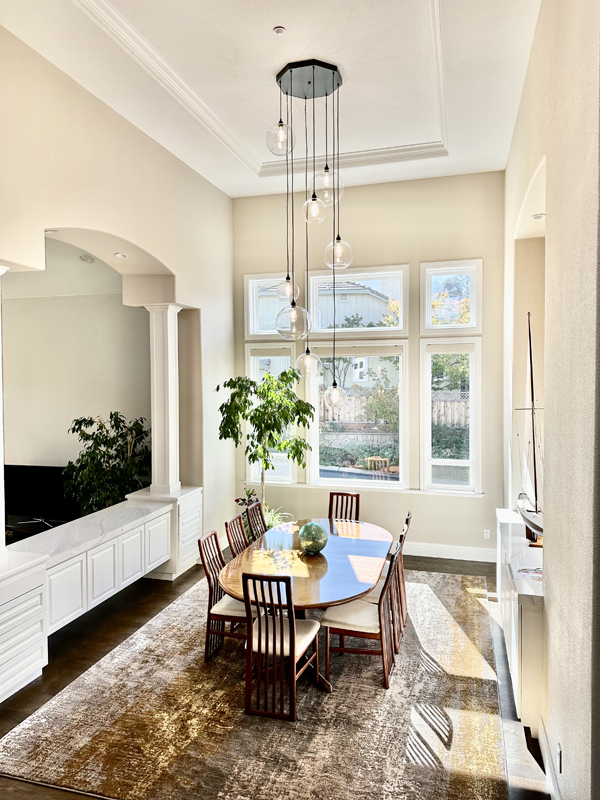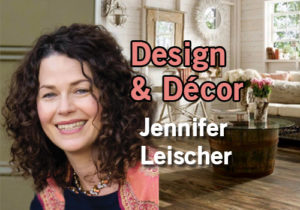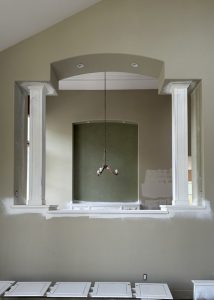Weigh form vs. function to create a space that’s all you

 CLAYTON, CA (Apr. 4, 2024) — When working on a design project, my rule is to balance form and function.
CLAYTON, CA (Apr. 4, 2024) — When working on a design project, my rule is to balance form and function.
If form and function are equal, you’ll not only have an aesthetically pleasing living space, but also a space with a purpose.
One aspect of form is all the great stuff that will be placed within your living space: cabinetry, decorative lighting, upholstered and antique furniture, art, area rugs, tile, wallpaper. It can also include architectural details, like adding windows, moving or adding a wall, or increasing the square footage.
What will it look like?
Form is what your design project will look like. If you’re remodeling your kitchen, you are probably quite familiar with how it exists today. You know where you keep your baking supplies, cereal over there, pots and pans under here. But as you dive into the redesign of things, your kitchen will change.
A new kitchen may have the same cabinet footprint, but with a new design comes more efficient storage, updated appliances and potentially architectural updates like the addition of a window or two, or a vaulted ceiling.
 Form is not only how you want the living space to look, but how you’d like to live in this new space you are designing.
Form is not only how you want the living space to look, but how you’d like to live in this new space you are designing.
HGTV has glamorized the extreme makeover: Buy a house, gut it and start over. I tend to agree that these sorts of projects are exciting. Who wouldn’t want to take a sledgehammer and knock out a wall?
But if you’re unsure of the changes you want to make, consider living in your new home for a while. Get to know the space before you start editing. Form can take place a lot easier and organically when you start to map out your life in your new home.
You may even discover unique things about your new home once you live there for a while. Like, the natural light that comes in through your bedroom windows first thing in the morning or how the sun sets in the evening, soaking your living room in light. These details are something you’d never learn from a property posting. You must live in your home to realize these natural gems.
Function
Meanwhile, function is similar to form when you start talking about moving or adding walls, or additional square footage. The form of a living space is obviously changing with these architectural edits, but at the same time, function comes to play because the architectural changes are most likely because you need more space or want to visually open up a smaller living space.
Function is all about making sure that the living space you are designing has purpose and makes sense for how you live. In some ways, it’s easy to design over the top and not think about the consequences. Opulent fabrics on obscure, statement furniture, custom finishes on the walls, woodwork and furniture, as well as decorative lighting that illuminates art are perfect if you intend to only look at this living space – and never step foot onto the silk area rug. But if you want to truly live in this space, those materials are all wrong.
Kids, fur babies, and multiple family members and friends coming and going leads to a good amount of wear and tear. Furniture, as well as the layout of your home, needs to be practical for how you live.
If you have four yellow Labs that must snuggle with you on the family room sofa, find one that is not only big enough for these furry friends but also something that can be cleaned over and over. If you like to read in your kitchen after everyone has gone to bed, make sure you have a nook with excellent lighting.
Using form and function as your design guideline will help you achieve a well-balanced living space. You can create a good-looking living space, designed in your personal aesthetic … that just makes sense for how you’d like to live.
Jennifer Leischer is the owner of J. Designs Interior Design based in Clayton. Contact her with questions, comments and suggestions at jenna@j-designs.com.

Jennifer Leischer
Jennifer Leischer is the owner of J. Designs Interior Design based in Clayton, CA. Combining a public relations degree from California State University, Chico, with further studies in design and interior architecture at the University of California, Berkeley, Jennifer began her career as an interior designer in 1998, working for various firms in San Francisco and Orinda, and Denver, Colorado. She describes every designing moment, throughout her career, as a wonderful tutorial about the importance of relationships, open communication, and getting down to the basics of functional, yet stylish, living spaces.
